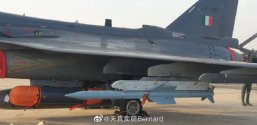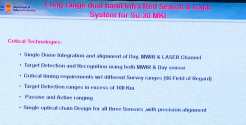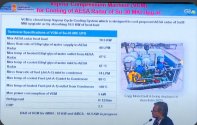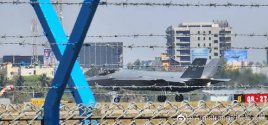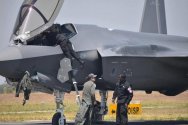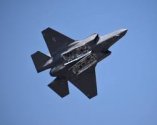You are using an out of date browser. It may not display this or other websites correctly.
You should upgrade or use an alternative browser.
You should upgrade or use an alternative browser.
Indian Military News, Reports, Data, etc.
- Thread starter bd popeye
- Start date
Lethe
Captain
LCA Mk. 2: "By 2028 should start getting ready for induction."
AMCA: first flight "will happen in seven years" but induction "may take ten years."
Unless I am mistaken, we were just notified of a 5-year delay on AMCA (first flight previously scheduled for 2025). Induction three years after first flight is obviously ludicrous but there is only so much bad news one can deliver at once. Note the qualified language attached to the 2028 date for LCA Mk. 2 also.
Last edited:
Didn't they say that AMCA will enter service in 2035 last time?
LCA Mk. 2: "By 2028 should start getting ready for induction."
AMCA: first flight "will happen in seven years" but induction "may take ten years."
Unless I am mistaken, we were just notified of a 5-year delay on AMCA (first flight previously scheduled for 2025). Induction three years after first flight is obviously ludicrous but there is only so much bad news one can deliver at once. Note the qualified language attached to the 2028 date for LCA Mk. 2 also.
India has too many fighter jet programs and too little production experience and institutional knowledge. I expect all their fighter jet programs to be delayed for 10 or so years.Didn't they say that AMCA will enter service in 2035 last time?
They should have built 1 fighter and refined it until it became good. Then start designing and producing other fighters.
That cooling capacity is interesting as it can be directly used to estimate the radar's potential range.
Assuming 2000 TRM's for Su-30's and TRM PAE of say 35% (typical for A-class amplifier, as it provide the most linear signal) and frequency of 9500 MHz and 25% duty cycle typical for Russian Radar. The resulting AESA can have 22.6 KW of peak power, each TRM's is then yield 11.2 Watt of peak and 2.82 or maybe 3 Watt of Average emitted power.
The resulting radar with those above allows for 249 Km range against a 3 sqm target with probability of detection (PD) of 90%, which easily supports long range AAM's. in other word it can lock the target at that range. While for detection a smaller SNR is allowed which correspond to PD of 50% (e.g 13-15 dB) While 90% requires higher SNR could be as high as 24 dB.
The following are my estimate of range.
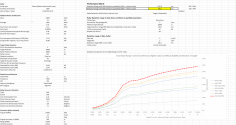
Increasing the cooling capacity even more will allow the radar to accommodate more powerful modules. The other way however is to maximize the amount of TRM's that the antenna could hold. The latter promise 68% gain in range for every twice amount of TRM carried (e.g 1200 to 2400).
Assuming 2000 TRM's for Su-30's and TRM PAE of say 35% (typical for A-class amplifier, as it provide the most linear signal) and frequency of 9500 MHz and 25% duty cycle typical for Russian Radar. The resulting AESA can have 22.6 KW of peak power, each TRM's is then yield 11.2 Watt of peak and 2.82 or maybe 3 Watt of Average emitted power.
The resulting radar with those above allows for 249 Km range against a 3 sqm target with probability of detection (PD) of 90%, which easily supports long range AAM's. in other word it can lock the target at that range. While for detection a smaller SNR is allowed which correspond to PD of 50% (e.g 13-15 dB) While 90% requires higher SNR could be as high as 24 dB.
The following are my estimate of range.

Increasing the cooling capacity even more will allow the radar to accommodate more powerful modules. The other way however is to maximize the amount of TRM's that the antenna could hold. The latter promise 68% gain in range for every twice amount of TRM carried (e.g 1200 to 2400).
I'm surprised the US let the F35 go when India has S400 in use.
I'm surprised the US let the F35 go when India has S400 in use.
I don't think they will activate S-400 when F-35 is present. Besides, they've got three luneburg lenses installed.

